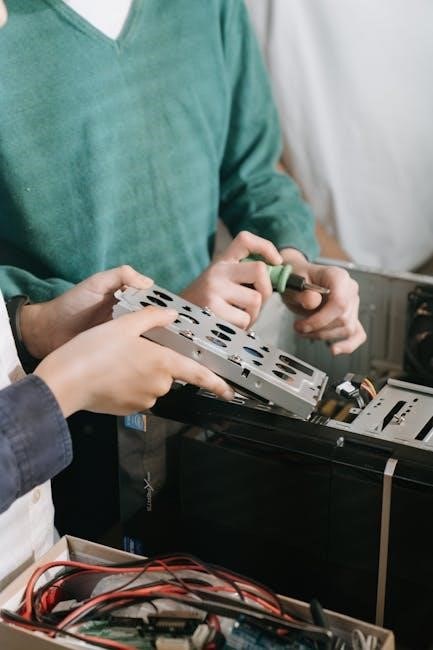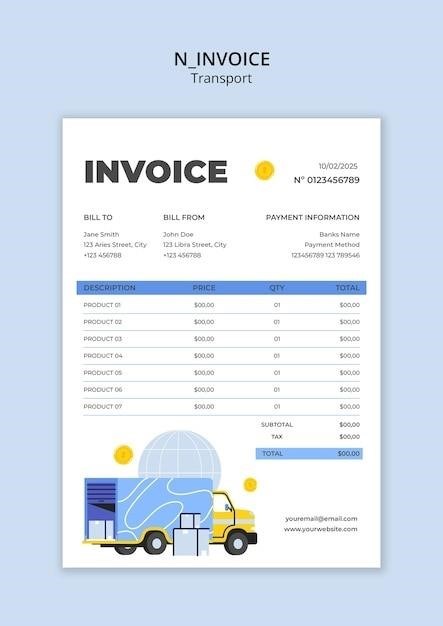This manual provides essential steps for diagnosing and resolving issues with the Lippert Leveling System, including error codes, hydraulic malfunctions, and sensor calibration for optimal performance.
The Lippert Leveling System is a cutting-edge solution designed to stabilize and level RVs, ensuring a smooth and comfortable experience. This automatic system simplifies the process of adjusting your vehicle’s position, eliminating manual effort. It consists of hydraulic components, sensors, and a control panel that work together seamlessly. Understanding how this system operates is essential for troubleshooting and maintaining its functionality. The system is equipped with advanced features like error detection and auto-leveling capabilities, making it a reliable choice for RV owners. By familiarizing yourself with its components and operation, you can address issues effectively and keep your RV stable and secure. Regular maintenance ensures optimal performance and extends the system’s lifespan.
Importance of Troubleshooting the Lippert Leveling System
Importance of Troubleshooting the Lippert Leveling System
Troubleshooting the Lippert Leveling System is crucial for maintaining the stability and safety of your RV. A malfunctioning system can lead to uneven leveling, which may cause structural damage, appliance failure, and safety hazards. Regular troubleshooting helps identify issues early, preventing costly repairs and ensuring your RV remains secure. It also extends the system’s lifespan by addressing wear and tear promptly. Additionally, a well-functioning leveling system enhances comfort during travel and camping, making troubleshooting an essential skill for RV owners. By understanding and addressing common problems, you can maintain optimal performance and enjoy a hassle-free experience on the road.

Understanding the Lippert Leveling System Components
The Lippert Leveling System includes hydraulic pumps, control panels, stabilizing jacks, and sensors, each playing a vital role in ensuring proper leveling and stability for RVs.
Hydraulic System Overview
Hydraulic System Overview
The hydraulic system is the backbone of the Lippert Leveling System, utilizing pumps, valves, and fluid to operate the jacks and stabilize the RV. Proper fluid levels and pressure are crucial for functionality. Regular inspections ensure leaks and blockages are addressed promptly. The system’s design allows for automatic leveling, but manual overrides are available for troubleshooting. Understanding the hydraulic components is essential for diagnosing issues like slow operation or failure to engage, which often stem from fluid contamination or pump malfunctions. Maintaining this system prevents costly repairs and ensures reliable performance during RV setup. Always refer to the manual for specific hydraulic maintenance guidelines.
Control Panel Functions
Control Panel Functions
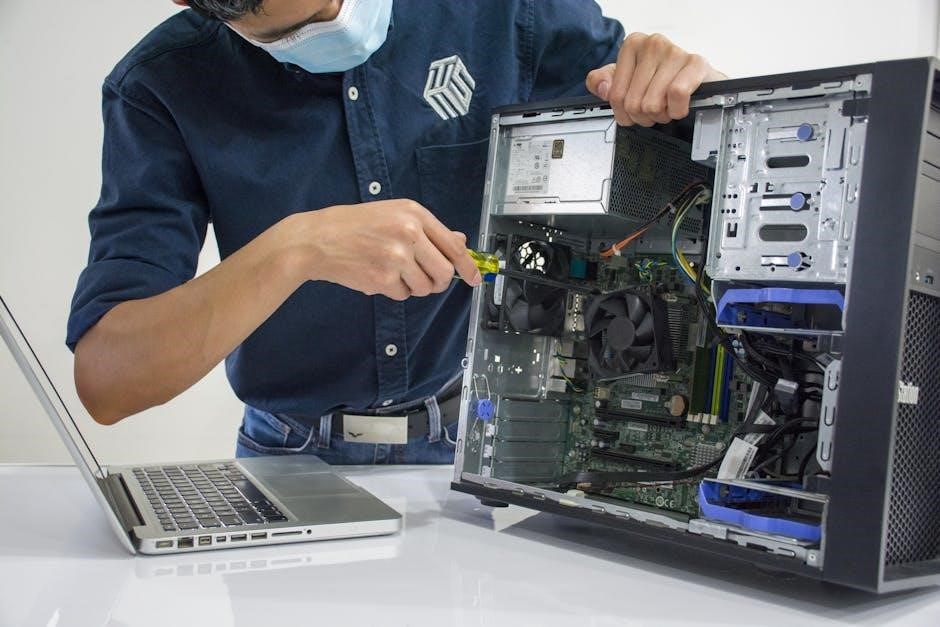
The control panel is the central interface for operating the Lippert Leveling System, enabling automatic and manual leveling modes. It displays system status, error codes, and diagnostic information. Key functions include activating the hydraulic jacks, monitoring sensor data, and initiating calibration processes. The panel also allows for manual overrides when automatic leveling fails. Common issues like error codes or unresponsiveness can often be resolved by restarting the panel or checking power connections. Regularly updating the control panel’s software and ensuring proper wiring can prevent malfunctions. Understanding its functions is crucial for effective troubleshooting and maintaining optimal system performance. Always consult the manual for specific control panel maintenance and repair guidelines.
Jacks and Their Roles
Jacks and Their Roles
The jacks are essential components of the Lippert Leveling System, responsible for stabilizing and leveling the RV. They operate by extending or retracting to adjust the vehicle’s position on uneven surfaces. Available in electric or hydraulic models, the jacks are controlled via the system’s control panel. Proper alignment and even distribution of weight are critical for their functionality. Issues such as jacks not extending or retracting can often be traced to power problems, misalignment, or obstructions. Regular maintenance, including lubrication and inspection for wear, ensures optimal performance. If jacks malfunction, manual operation may be required, or professional assistance might be needed to restore functionality; Always refer to the manual for specific jack operation and troubleshooting guidelines.
Sensors and Their Importance
Sensors and Their Importance
Sensors are critical in the Lippert Leveling System, ensuring accurate detection of the RV’s orientation and ground conditions. They provide data to the control panel, enabling precise leveling and stabilization. Faulty sensors can lead to system malfunctions, such as uneven leveling or error codes. Regular calibration is essential to maintain sensor accuracy. Issues like loose connections or debris can disrupt sensor functionality, requiring thorough inspection and cleaning. If sensors fail, the system may not operate correctly, potentially causing unsafe conditions. Proper maintenance and prompt troubleshooting of sensors are vital to ensure the Lippert Leveling System performs reliably. Always consult the manual for sensor calibration and troubleshooting guidance to prevent system breakdowns and maintain stability.
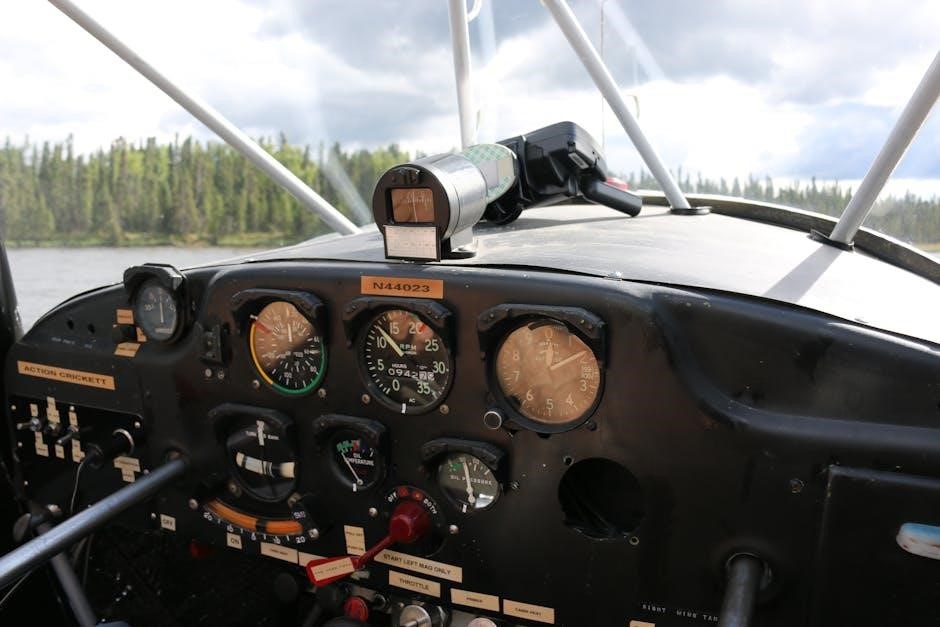
Common Issues with the Lippert Leveling System
The Lippert Leveling System often faces issues like improper leveling, error codes, hydraulic leaks, jack malfunctions, and power outages, requiring timely troubleshooting and maintenance.
System Not Leveling Properly
System Not Leveling Properly
If the Lippert Leveling System fails to level properly, it may be due to uneven ground, sensor misalignment, or hydraulic malfunctions; Check the sensors for cleanliness and alignment, ensuring they are free from debris. Inspect the hydraulic lines for leaks or damage, as this can disrupt system pressure. Verify that all jacks are extending and retracting evenly, and ensure the control panel is functioning correctly. If issues persist, recalibrate the sensors or restart the system. For severe cases, consult the troubleshooting manual or contact Lippert support for professional assistance. Regular maintenance and inspections can help prevent such issues and ensure optimal leveling performance.

Error Codes and Their Meanings
Understanding error codes is crucial for diagnosing issues with the Lippert Leveling System. Common codes like RF and RM indicate communication errors between sensors and the control panel. An “Auto-Level Fail” code suggests uneven ground or sensor misalignment. Other codes may point to hydraulic system malfunctions or jack failures. Refer to the manual for specific code meanings and troubleshooting steps. Resetting the system or recalibrating sensors often resolves these issues. If codes persist, inspect hydraulic lines and connections for damage or leaks. Consulting the troubleshooting manual or contacting Lippert support can provide further guidance. Addressing error codes promptly ensures system reliability and prevents further damage.
Hydraulic System Malfunction
Hydraulic System Malfunction
A hydraulic system malfunction can cause the Lippert Leveling System to fail, preventing proper stabilization. Common issues include fluid leaks, low hydraulic pressure, or faulty pumps. If the system loses pressure, the jacks may not extend or retract. Check hydraulic lines for visible damage or leaks and ensure fluid levels are adequate. A malfunctioning pump or solenoid can also disrupt operation. Refer to the manual for specific error codes related to hydraulic issues. Restarting the system or replacing faulty components may resolve the problem. If issues persist, consult a professional or contact Lippert support for assistance. Regular maintenance, such as fluid checks and line inspections, can prevent future malfunctions.
Jacks Not Extending or Retracting
Jacks Not Extending or Retracting
If the jacks fail to extend or retract, it can disrupt the leveling process. Common causes include low hydraulic fluid levels, faulty solenoids, or electrical issues. Check the hydraulic lines for leaks and ensure connections are secure. A dead battery or blown fuse may also prevent jack operation. Verify power to the control panel and ensure all switches function correctly. If the jacks are over-extended, they may require manual retraction. Consult the manual for specific error codes related to jack functionality. Testing the jacks individually can help identify faulty components. If issues persist, contact Lippert customer support for further assistance. Regular maintenance, such as lubricating moving parts, can prevent future malfunctions.
Power Issues and Fuse Problems
Power issues and blown fuses are common challenges with the Lippert Leveling System. Start by checking the electrical panel for tripped breakers or blown fuses. Ensure the system’s power source is stable and connections are secure. A dead battery or low voltage can prevent the system from functioning. Test the battery voltage and recharge if necessary. If fuses are blown, replace them with the correct rating specified in the manual. Error codes may indicate power-related problems, so restarting the system after addressing these issues can resolve the fault. Always inspect electrical connections for corrosion or damage. If power issues persist, consult the troubleshooting guide or contact Lippert customer support for assistance. Proper electrical maintenance ensures reliable system operation. Regular checks can prevent unexpected shutdowns and ensure safety while leveling your RV.

Troubleshooting Steps for the Lippert Leveling System
Check power sources and connections, inspect hydraulic lines for leaks, test jacks for functionality, restart the control panel, and calibrate sensors to resolve issues efficiently.
Checking Power Sources and Connections
Checking Power Sources and Connections
Ensure the Lippert Leveling System has adequate power by checking the battery voltage and connections. Verify the system switch is in the “on” position. Inspect fuses and circuit breakers for any signs of damage or tripping. If a fuse is blown or a breaker is tripped, replace or reset it as needed. Also, examine all electrical connections for corrosion or looseness, as these can disrupt power flow. Clean or tighten any problematic connections. Refer to your manual for specific locations of fuses and breakers. If issues persist, test electrical components with a multimeter to identify faults. Proper power supply is crucial for system operation, so address any findings promptly.
Inspecting Hydraulic Lines for Leaks
Inspecting Hydraulic Lines for Leaks
Inspecting hydraulic lines for leaks is crucial for maintaining the Lippert Leveling System’s performance. Begin by turning off the system and allowing the hydraulic fluid to cool. Visually examine all hydraulic lines, hoses, and connections for signs of damage, cracks, or fluid leakage. Use a pressure test kit to identify any hidden leaks under pressure. If you notice stains, drips, or low fluid levels, these indicate potential leaks. Tighten any loose connections and replace damaged lines immediately. Refer to your manual for guidance on hydraulic system maintenance. Regular inspections can prevent costly repairs and ensure reliable operation; Always wear protective gloves and eyewear when handling hydraulic components.
Testing Jacks for Proper Functionality
Testing Jacks for Proper Functionality
Testing jacks for proper functionality ensures the Lippert Leveling System operates efficiently. Start by powering on the system and using the control panel to extend and retract each jack individually. Monitor their movement to ensure smooth operation without jerking or stopping mid-cycle. If a jack fails to extend or retract fully, inspect for blockages or damage. Check hydraulic fluid levels, as low levels can impair jack performance. Test the jacks under load by raising the RV slightly and ensuring stability. Repeat the process on different surfaces to confirm consistent functionality. If issues persist, consult the manual or contact Lippert support for further assistance. Regular testing prevents system failure during use.
Restarting the Control Panel
Restarting the Control Panel
Restarting the control panel is a simple yet effective step in troubleshooting the Lippert Leveling System. Begin by turning off the power source to the system. Wait for 30 seconds to allow any residual power to dissipate. Turn the power back on and observe if the control panel initializes properly. If issues persist, check all connections to ensure they are secure and free from damage. A restart can resolve software glitches or communication errors between components. After restarting, test the system by running a manual leveling cycle. If the problem remains unresolved, consult the manual or contact Lippert customer support for further assistance.
Calibrating the System Sensors
Calibrating the System Sensors
Calibrating the sensors in the Lippert Leveling System is crucial for ensuring accurate leveling and proper functionality. Start by accessing the control panel and selecting the calibration option from the menu. Follow the on-screen instructions to complete the process, which may involve initializing the system and allowing it to detect the RV’s position. Once calibrated, test the system by running a manual leveling cycle to confirm everything works correctly. If the sensors are misaligned or faulty, recalibration may not resolve the issue, and replacement might be necessary. Regular sensor calibration is recommended to maintain system accuracy and prevent errors during operation. Always refer to the manual for specific calibration steps tailored to your system.

Maintenance Tips for the Lippert Leveling System
Regular maintenance ensures optimal performance. Check hydraulic fluid levels, clean and lubricate moving parts, and winterize the system to prevent damage. Schedule annual professional inspections.
Regular Hydraulic Fluid Checks
Regular Hydraulic Fluid Checks
Regular hydraulic fluid checks are crucial for maintaining the Lippert Leveling System’s performance. Low fluid levels can lead to system malfunctions, such as jacks not extending or retracting properly. Always use the type of hydraulic fluid recommended by the manufacturer, as specified in the manual. To check the fluid level, locate the reservoir and ensure it is at the recommended level. If the level is low, top it off carefully to avoid contamination. Inspect the hydraulic lines for any signs of leaks or damage, as these can cause fluid loss and system failure. Regular checks help prevent costly repairs and ensure smooth operation. Schedule annual professional inspections for optimal system health.
Cleaning and Lubricating Moving Parts
Cleaning and Lubricating Moving Parts
Regular cleaning and lubrication of moving parts are essential for maintaining the Lippert Leveling System’s efficiency. Dirt and grime can accumulate on jacks and hydraulic components, causing friction and wear. Use a silicone-based spray or marine-grade grease to lubricate pivot points and hinges. Clean metal surfaces with a wire brush to remove rust or corrosion. Inspect all moving parts for wear or damage and replace them if necessary. Lubricate every 3 to 6 months or after exposure to harsh weather conditions. Proper maintenance ensures smooth operation and extends the system’s lifespan. Neglecting this step can lead to premature wear and costly repairs.
Winterizing the System
Winterizing the System
Winterizing the Lippert Leveling System is crucial to protect it from freezing temperatures and corrosion. Start by draining hydraulic fluid and replacing it with RV-specific antifreeze. Inspect all lines for cracks or leaks and seal them immediately. Lubricate moving parts with a marine-grade grease to prevent rust. Disconnect the system from power sources and cover exposed components to shield them from moisture. Store the RV in a dry, insulated area during extreme cold. Avoid using the system in freezing conditions unless absolutely necessary. Proper winterization ensures the system remains functional and avoids costly repairs. Always consult the manual or a professional if unsure about any steps.

Advanced Troubleshooting Techniques
Advanced techniques involve addressing complex error codes, replacing faulty sensors, and bleeding the hydraulic system to ensure optimal performance and resolve persistent issues effectively.
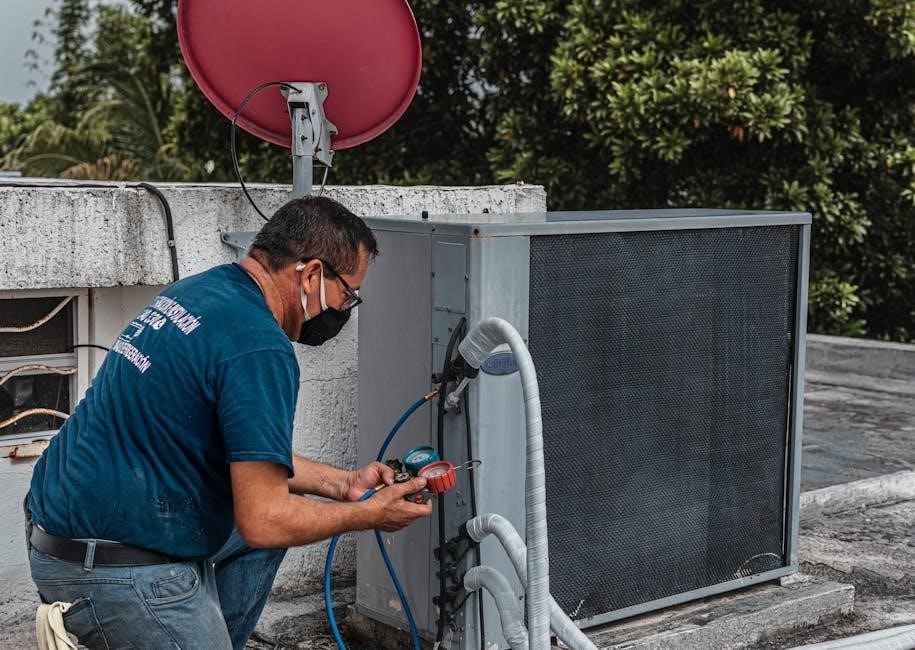
Addressing Complex Error Codes
Addressing Complex Error Codes
Complex error codes in the Lippert Leveling System often indicate deeper issues requiring advanced troubleshooting. Start by identifying the specific error code displayed on the control panel. Codes like RF or RM may point to communication failures or sensor malfunctions. Consult the system manual for code definitions to understand the root cause. Perform a power cycle by disconnecting the battery and restarting the system to reset internal logic. If the issue persists, inspect wiring connections for damage or corrosion, ensuring all components communicate effectively. For sensor-related errors, recalibrate sensors or replace them if faulty. In severe cases, updating system software or consulting a professional may be necessary. Regular maintenance and checks can prevent such complex issues from arising. Always refer to the troubleshooting guide for detailed steps and solutions to ensure proper system functionality and avoid further complications.
Replacing Faulty Sensors
Replacing Faulty Sensors
Faulty sensors can disrupt the Lippert Leveling System’s accuracy. If sensors malfunction, the system may display error codes or fail to level properly. To replace sensors, first identify the faulty ones using the control panel or error codes. Purchase genuine Lippert replacement sensors to ensure compatibility. Disconnect power and carefully remove the old sensor, taking note of wiring connections. Install the new sensor, ensuring it’s securely mounted and aligned. Reconnect wiring and power up the system to test functionality. Calibration may be required after replacement. Regularly inspect sensors for damage or misalignment to prevent future issues. Always follow the manufacturer’s guidelines for replacement and maintenance to ensure optimal system performance and reliability.
Bleeding the Hydraulic System
Bleeding the hydraulic system is essential to remove air bubbles that can disrupt the Lippert Leveling System’s performance. Start by ensuring the system is powered off and the RV is on a level surface. Locate the hydraulic pump and reservoir, then check the fluid level and top it off if necessary. Use the control panel to manually extend and retract each jack to force air bubbles out. Activate the auto-leveling function to circulate the hydraulic fluid thoroughly. Repeat this process until the system operates smoothly without hesitation. If issues persist, inspect hydraulic lines for leaks or blockages; Regular bleeding ensures consistent performance and prevents premature wear on hydraulic components, maintaining the system’s efficiency and reliability over time.
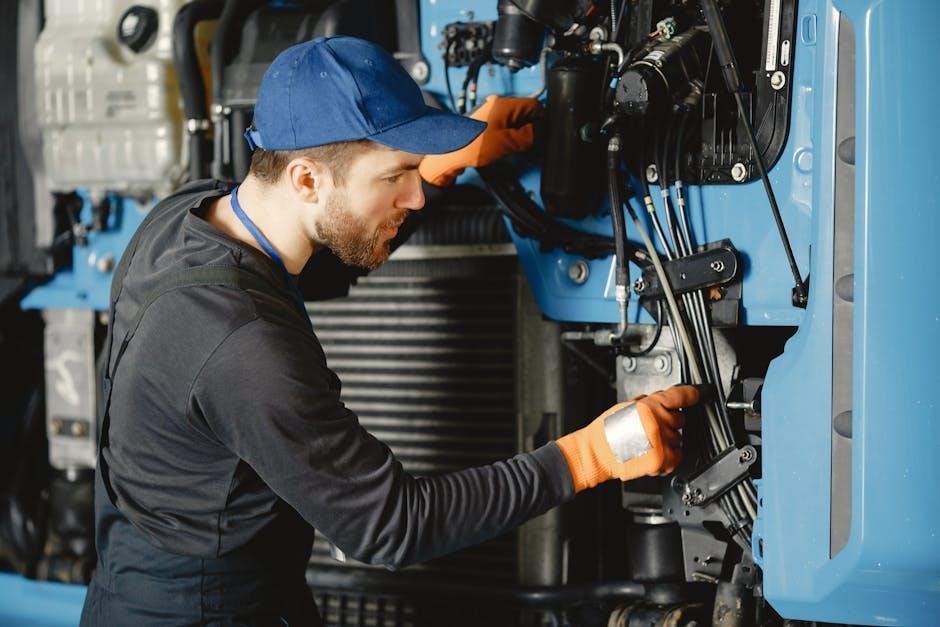
Contacting Lippert Customer Support
For assistance with your Lippert Leveling System, contact their customer support team directly. Visit their official website for contact details, including phone numbers, email addresses, and live chat options. Phone support is available during business hours, and representatives are trained to address troubleshooting and repair inquiries. Be prepared to provide your system’s serial number, a detailed description of the issue, and any error codes. Lippert also offers online resources, such as manuals and FAQs, to help resolve common problems independently. If your issue cannot be resolved through troubleshooting, schedule a service appointment or request a certified technician. Lippert’s dedicated team is committed to ensuring your system operates efficiently and safely.
